
I am a fan of Zima devices. From ZimaBoard to ZimaCube, these devices lower the barrier of owning a homelab.
The first ZimaBoard was released four years ago after a successful crowdfunding campaign. Four years later, we have a newer version of the same ZimaBoard with better hardware specifications.
I'll be sharing my initial impressions of the newly announced ZimaBoard 2.
At this point, I would suggest reading my review of ZimaBoard version 1 as I'll be comparing the devices and its features.
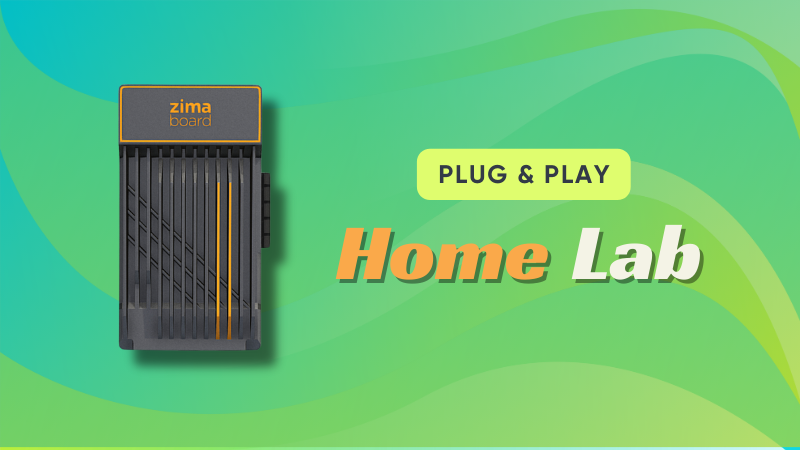
Build & Design
The unit keeps its passive cooling design—no fans or vents—ensuring silent operation, which is perfect for home labs or media setups.
The color and casing have changed slightly. ZimaBoard 2 is encased in a cast aluminum enclosure and it surely makes it a bit heavier than before. Personally, I liked the golden-brown looks of the older ZimaBoard.
Take a look at the two ZimaBoards side by side. Which one do you think looks better?

Another thing that has changed here is the height of device. The previous version was taller and thus had taller radiator fins. Since it's a passive cooling device, taller radiator fins would be better for keeping the device cooler. I did notice that ZimaBoard 2 heats up a little more than version 1, but it's not alarming.
The ports are mostly in the same place as the original, making it easy to swap out if you're upgrading your existing ZimaBoard to version 2.0.

Let's talk about the hardware changes.
ZimaBoard 1 vs ZimaBoard 2 Specification Comparison
Here's the side-by-side specification comparison of ZimaBoard 2 and 1.
| Feature | ZimaBoard 2.0 | ZimaBoard 1.0 |
|---|---|---|
| Processor | Intel Processor N150 4 Cores 6M Cache Up to 3.60 GHz | Intel Celeron Processor N3450 4 Cores 2M Cache Up to 2.20 GHz |
| Memory | 16GB/8GB LPDDR5x 4800MHz | 8GB (Max) LPDDR4x 2400MHz |
| eMMC | 64GB/32GB | 32GB |
| LAN | 2 x 2.5GbE LAN Ports - Intel chip | 2 x 1GbE LAN Ports - Realtek chip |
| HDD/SSD | 2x SATA 3.0 6Gb/s Ports with power input | 2x SATA 3.0 6Gb/s Ports with power input |
| USB | 2 x USB 3.1 | 2 x USB 3.0 |
| PCIe | 1x PCIe 3.0 x4 | 1x PCIe 2.0 x4 |
| Display | 1x Mini-DisplayPort 1.2 4K@60Hz | 1x Mini-DisplayPort 1.2 4K@60Hz |
| On-Board Interfaces | 1x CPU fan 4-pin connector, 1x LPC, 1x Front panel | 1x CPU fan 4-pin connector, 1x LPC, 1x Front panel |
| Graphics Frequency | Frequency Up to 1G MHz | Frequency Up to 0.7G MHz |
| Graphics Expansion | Supports Intel Quick Sync Video | Supports Intel Quick Sync Video |
| Virtualization | Intel AES, VT-x, VT-d | Intel AES, VT-x, VT-d |
| Cooling | Fanless Cooling | Fanless |
| CPUTDP | 6 W | 6 W |
| Size | 140mm * 81.4mm * 31mm | 138.7 x 81.4 x 34.9mm |
| Power | 12v 3A power supply | 12v 3A power supply |
There is also a 16GB RAM version, ZimaBoard 2 1664. I would suggest this model as 8GB RAM feels to be on the lower side of the spectrum and the device may start struggling if you use multiple services running in containers.

Experiencing ZimaBoard 2
ZimaBoard 2's intelligent packaging
I really want to talk about it. This is a small thing but shows the innovative minds of the Zima team.
ZimaBoard 2.0 comes in a cardboard packaged that looks to be made of recycled material. Plus points for that.Still
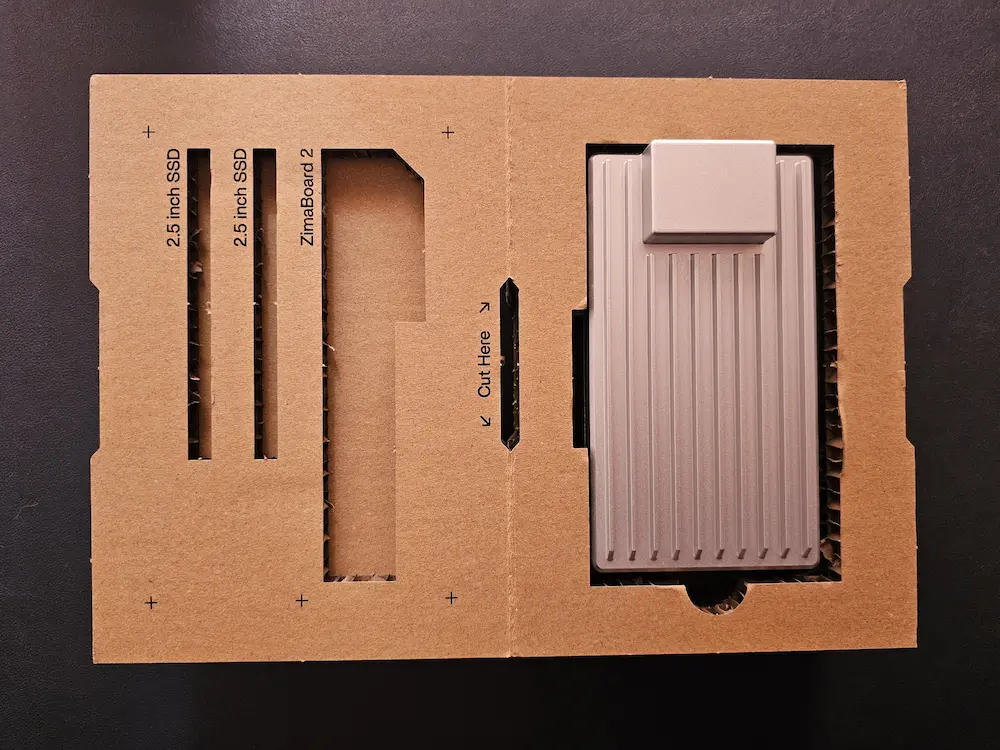
However, the ingenious thing is that you can cut half of it and use it as a stand or dock for your ZimaBoard along with two SATA SSDs. It's specifically designed that way.

ZimaOS is the way forward
It's not just the hardware that's changed between the two boards. ZimaBoard 2 will feature ZimaOS instead of CasaOS.
ZimaOS was introduced with ZimaCube. With it, IceWhale has evolved CasaOS Stillinto a dedicated, customized operating system for its devices.
ZimaOS makes it easier to deal with storage and update the installed updates. With ZimaClient, you can access your Zima device from outside home network without additional effort.
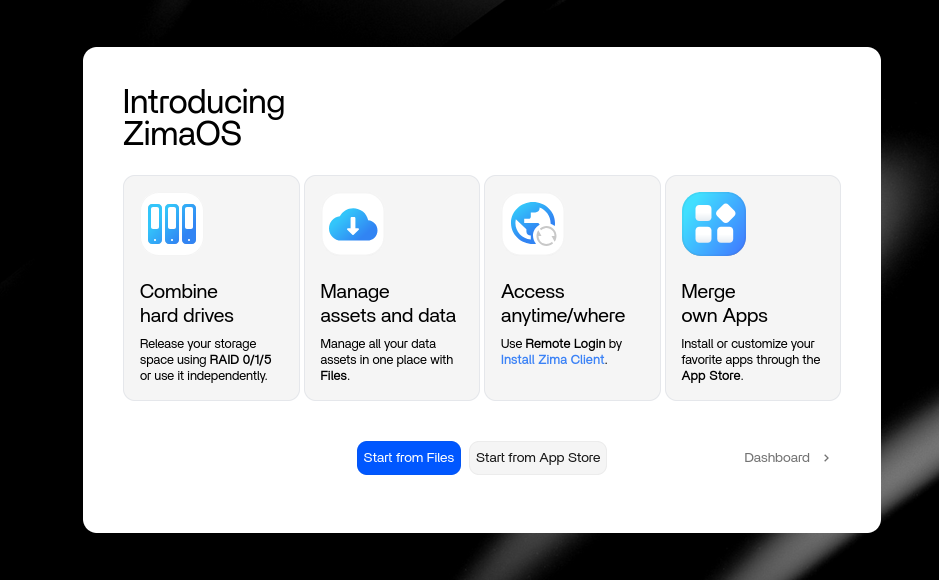
A little incontinence here is that ZimaClient is only available for Windows and macOS. It is not available for Linux or smartphones yet.
Since it is a prototype device, ZimaOS is still focused on ZimaCube device. Even though I was using it with ZimaBoard, it would mention ZimaCube everywhere, even for accessing it in the browser through ziacube.local
I was told that this will be fixed before the final launch.
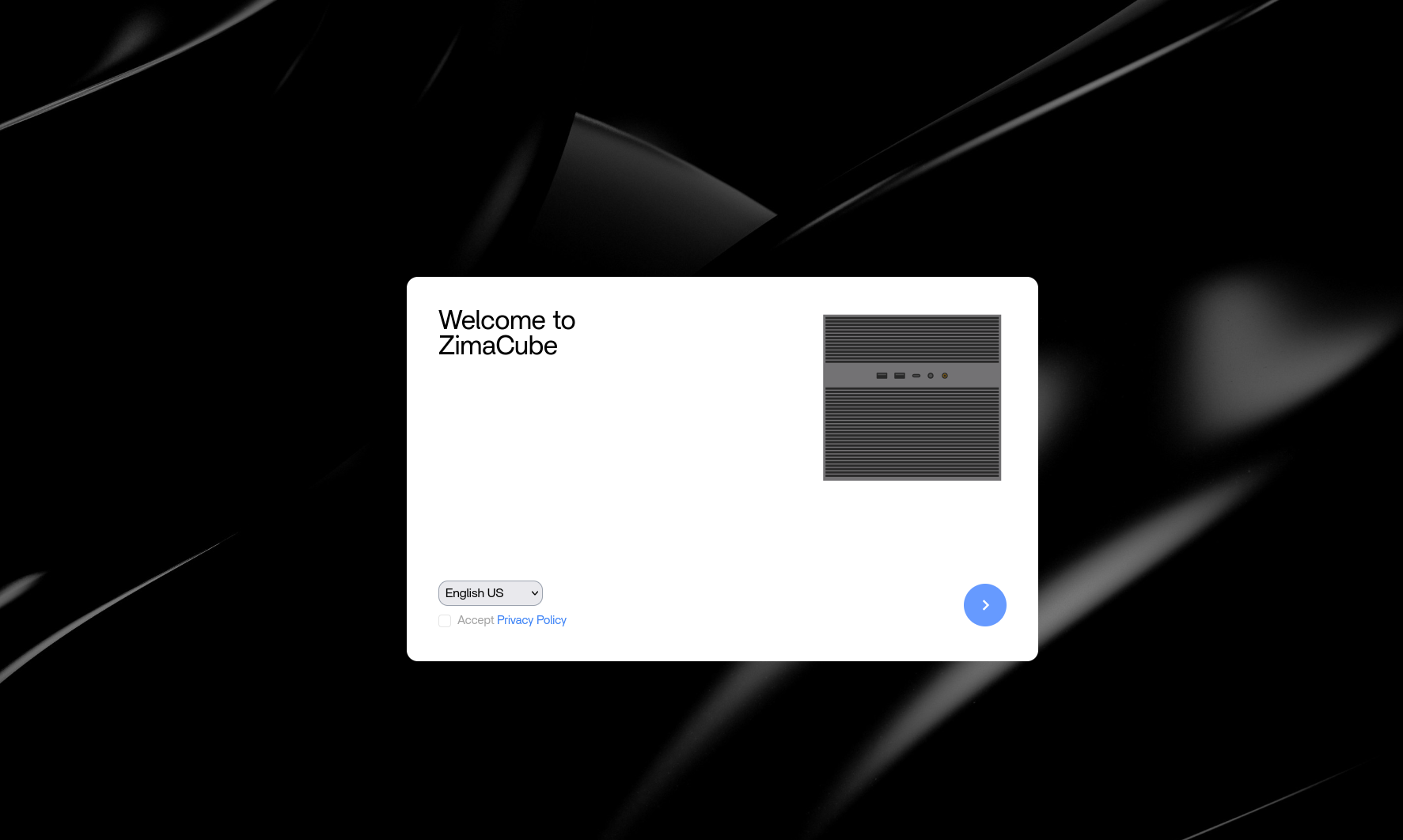
Installing a new service is just a matter of a few clicks. Underneath, a new Docker container is created for the service.
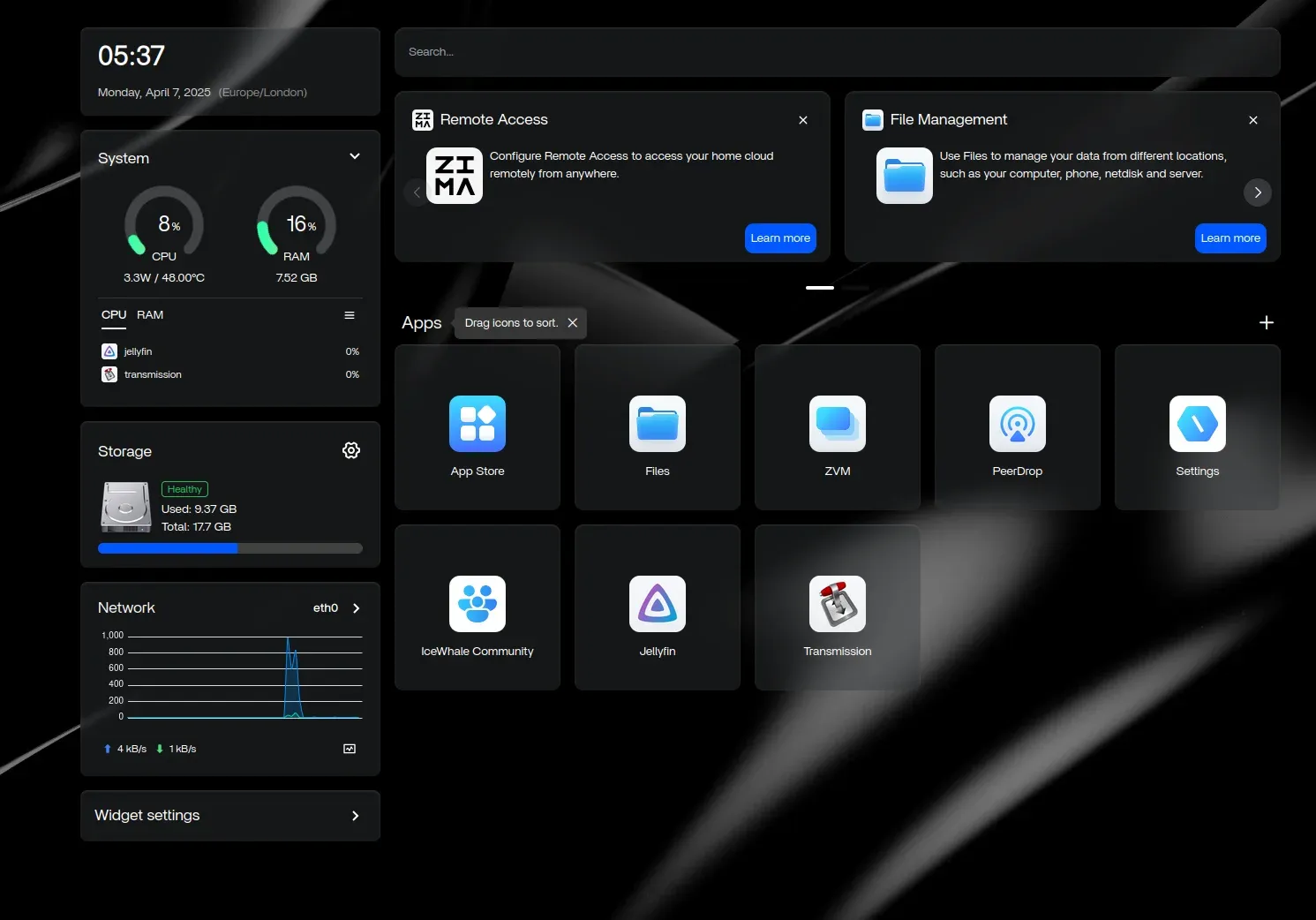
Some services may require a little configuration changes but nothing that a self-hoster, even a beginner, cannot handle.
Quick performance assessment
From NAS to Home server to a router, ZimaBoard can be used in many ways. However, I tested it primarily as a media server.
For this, I used Jellyfin, my favorite media server.
I streamed a 4K movie in Jellyfin with hardware acceleration enabled. Both versions have Intel Quick Sync video but somehow, version 2.0 streamed the media more efficiently. There were no lags when I skipped ahead. The playback was quite smooth.
Like the previous one, ZimaBoard 2 doesn't consume too much power. When it's idle, the power consumption is under 4W. It increases if you start using various services but still remains around 6-8W.
I kept it plugged in uninterrupted but idle for 3 days. The temperature and power consumption remain almost constant and well within limits.
However, if I connect multiple SATA SSDs and engage the PCIe slot, I am sure the power consumption will increase but it is still a good device to keep plugged in for prolong usage.
A deserving upgrade
One of the main complaints in the previous ZimaBoard was the use of Intel Celeron N3450 processor. It was already an old processor when ZimaBoard was announced in 2021.
Zima has learned the lesson and has included the latest Intel N150 processor. This is the processor of choice for Intel NUC and many other mini PCs too.
ZimaBoard was a success for IceWhale, but if we look at it in 2025, a 10-year-old processor would be a hard sell. And I think that's why IceWhale is refreshing its lineup with more modern hardware with ZimaBoard 2.
It's good to see the same price tag for the new version for the 8GB edition, which is a rarity these days. Are you listening, Apple, Samsung?
Although if you back their crowdfunding campaign, you get an early bird discount even on the new 16 GB version,
Is it pricey? Isn't a used computer better? With the success of the first ZimaBoard and then ZimaCube, Zima knows that there is a market for out-of-the-box, plug and play homelab device and they are catering to this demand.
The introduction of ZimaOS makes it an even easier choice. More on that in the detailed video of the final ZimaBoard 2. Stay subscribed for updates.
- Even the biggest players in the Linux world don't care about desktop Linux users. We do.
- We don't put informational content behind paywall. Your support keeps it open for everyone. Think of it like 'pay it forward'.
- Don't like ads? With the Plus membership, you get an ad-free reading experience.
- When millions of AI-generated content is being published daily, you read and learn from real human Linux users.
- It costs just $2 a month, less than the cost of your favorite burger.
Become a Plus Member today and join over 300 people in supporting our work.









